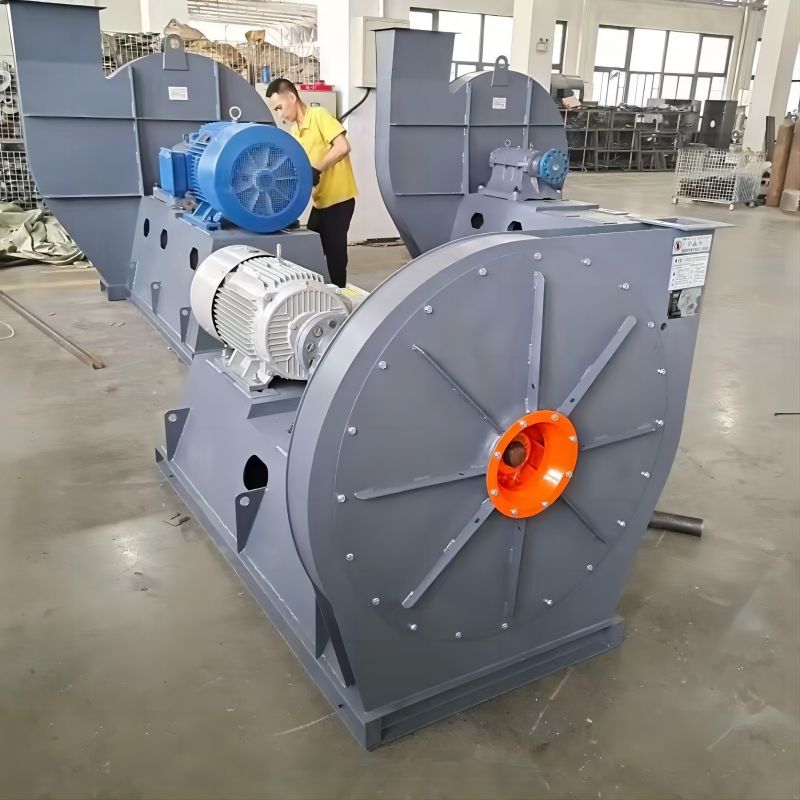
Roots Blower
Roots blower is a kind of multi-impeller, friction-free, oil-free impeller fan. The roots fan is characterized by the production of no pulse, high air volume, low noise, and high stability of the wind. Roots blower is widely used in biogas utilization, biomass fuel power generation, grain transportation, wind tunnel experiment and other fields.
Industrial Centrifugal Fan is a general machinery widely used in various industries of national economy. It is the customary abbreviation of gas compression and gas transmission machinery. Generally called fan include fan, blower, compressor.
By Gas outlet pressure (or boost):
Fan: the outlet full pressure is below 0.015Mpa at atmospheric pressure of 0.1Mpa at 20°C.
Blower: it means that the outlet pressure is 0.115~0.35Mpa.
Compressor: means an outlet pressure greater than 0.35Mpa.
The models and specifications of the fan vary greatly and complicated, but the nature of the fan lies in the main performance parameters of the fan. As long as we first make clear the differences of these performance parameters, it is of great help for us to understand the selection of the fan and the real fan equipment. So, what are the main performance parameters of the fan? This mainly includes: flow rate, pressure, gas medium, rotation speed, power.
The significance and selection principle of fan
When choosing the fan, first of all, we should choose the fan type, model and structure material according to the performance parameters, uses, process requirements, use occasions, etc., and strive to make the rated flow rate and rated pressure of the fan close to the process requirements.
Principle 1:
According to the physical and chemical properties of the gas transported by the ventilator, choose different uses of the ventilator. Exexplosion-proof fan shall be selected for corrosive gas.
Principle 2:
When selecting centrifugal fan, when the motor power is less than or equal to 75kw, the valve may not be installed for starting. When the centrifugal boiler induced draft fan is selected for discharging high temperature flue gas or air, the starting valve should be set up to prevent overload in cold operation.
Principle 3:
For the ventilation system with noise requirements, the ventilator with high efficiency and low impeller peripheral speed should be selected first and operated at the highest efficiency point; corresponding noise and vibration reduction measures should be adopted according to the propagation mode of noise and vibration generated by the ventilation system.
Principle 4:
When selecting ventilators, avoid working in parallel or in series. When inevitable, the same model and performance should be selected to work together. When series is used, there should be a certain pipeline connection between the first stage fan and the second stage fan.
Principle 5:
The selected fan should be considered for on-site installation and safe operation problems.
How to select the fan type
1. When selecting, first find static pressure;
2. Find down according to the column of static pressure to find the required air volume;
3. Read out the shaft power, noise, rotation speed and other parameters;
4. Check whether the performance curve, power curve, external dimensions and so on meet the requirements;
5. Match the appropriate motor upward according to the shaft power X1.1;
6. Selection is completed...
What parameters should be provided in the fan type selection?
1. Form, type and use of the fan
2. Installation method
3. Gas composition (including special temperature, humidity, corrosion and impurities)
4. Wind-out direction
5. Indoor installation or outdoor installation
6. Other conditions limited (such as noise less than 60 dBA, etc.)
7. Accessories and special requirements